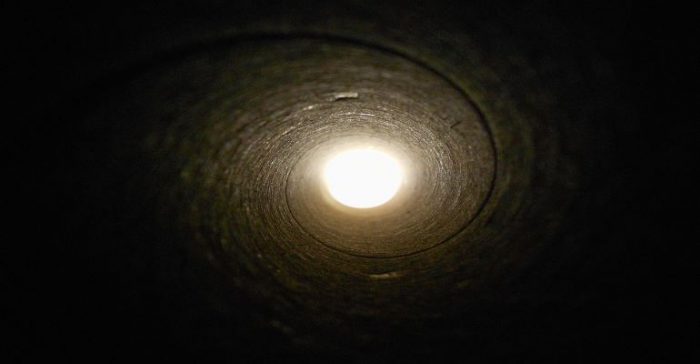This article was originally published on utilitydive.com on Nov. 25, 2019.
Dive Brief:
- National Grid has agreed to lift its moratorium on new gas service applications in downstate New York for a two-year period, after striking a deal with the state, Gov. Andrew Cuomo, D, announced Monday.
- The utility will begin processing applications that have been stalled since May, after New York’s Department of Environmental Conservation (DEC) denied its request for a permit to construct a $1 billion gas pipeline project. In addition, National Grid will propose long-term solutions to gas supply issues in the region within three months.
- Cuomo, who had threatened to revoke National Grid’s downstate operation certificate unless it backed off the moratorium, called the agreement “a victory for customers.” But at least one environmental advocate remains concerned that the pipeline project is still on the table.
Dive Insight:
National Grid has identified new solutions to supply consumer gas needs in downstate New York since announcing the moratorium, company spokesperson Domenick Graziani told Utility Dive in an email. These include a “previously unavailable source of short-term peaking supplies,” which he declined to provide further details on.
The utility also anticipates reductions in demand due to energy efficiency and demand response programs, a new compression project that will provide additional long-term capacity to portions of Long Island and a greater-than-expected number of customers interested in shifting to “non-firm” service — that is, customers who switch to oil or other alternative fuels when asked to by National Grid. These customers are charged differently from residential and other “firm” customers and can be penalized if they don’t make the switch, according to Graziani.
Some environmental advocates viewed National Grid’s moratorium as a means to pressure regulators into moving forward with the Northeast Supply Enhancement (NESE) project, which would involve installing approximately 24 miles of underwater pipeline to transport gas from Pennsylvania to downstate New York.
Cuomo’s threat to revoke National Grid’s operational certificate earlier this month could have jeopardized the utility’s ability to serve 1.8 million gas customers in New York City and Long Island. On Nov. 19, Moody’s Investors Service called Cuomo’s notification credit negative for all investor-owned utilities in New York, saying it weakened the consistency and credibility of utility regulation in the state.
Under the terms of the agreement, National Grid will pay $36 million in penalties to “support new energy conservation measures and clean energy projects,” Cuomo said in a press release. This process will be supervised by the New York State Division of the Budget and the state Public Service Commission (PSC). The latter will receive reports from a state-appointed monitor on whether National Grid is complying with the agreement. If there are no issues, the PSC will not move forward with revoking the utility’s operational certificate.
National Grid regrets not providing customers with more notice and explanations for the moratorium, Interim President Badar Khan said in a press release.
“We have worked hard to identify an innovative series of alternatives to meet growing demand. With this agreement, we will present options for long-term supply solutions that ensure our customers have the service they require and desire,” added John Bruckner, National Grid New York’s president.
In addition to its immediate measures to increase supply and reduce demand, the utility is considering various long-term solutions for supply needs in New York. These options could include renewable energy sources, conservation strategies, liquefied and compressed natural gas facilities, or even a new pipeline, according to Graziani. The utility hasn’t taken the NESE project off the table either.
“If there is a consensus that the NESE project is the most viable and sustainable solution, we anticipate the project would go forward with the support of the state. Any supply option must be operationally sound and cost effective, and we, as the operator of the gas network and steward of customer bills, will ultimately need to be comfortable with the chosen option,” he said.
The utility’s proposed long-term plan will need to be identified and approved by the state by June 2020, in order to go into operation by the fall of 2021.
Industry groups agreed with National Grid’s concerns about long-term supply constraints in downstate New York. Pipelines are the safest way to get that gas to customers, a spokesperson for the Interstate Natural Gas Association of America told Utility Dive in an email, adding that a “predictable permitting process for pipeline construction is needed for National Grid and its customers to access the abundant natural gas supplies that lie at the region’s doorstep.”
But Natural Resources Defense Council Senior Attorney Kimberly Ong expressed concern about the proposed NESE project, in an emailed statement to Utility Dive. Moving forward with the pipeline “would be a total contradiction of our climate goals and jeopardize the health of marine life and communities across the state. Governor Cuomo must hold firm and shelve this reckless project once and for all,” Ong said.
New York Attorney General Letitia James and Assemblymember Michael Cusick, chair of the Standing Committee on Energy, intend to continue monitoring National Grid to ensure customers are treated fairly, they said in a press release. Chair of the state Senate Committee on Energy and Telecommunications, Kevin Parker, said the moratorium was “completely unfair” to customers in Brooklyn, Queens and Long Island.
